The Lagrangian Points
Lagrangian Points are places where gravity and centrifugal force cancel out.
Lagrangian points were first discovered by Joseph-Louis Lagrange in the 18th century. He found them while working on the famous three body problem. In every system there are five of these points. Some are useful, some are not.
The Properties of the Lagrangian Points
At every point gravity and the centrifugal force cancel out. This allows orbiting objects to sit comfortably without moving much relative to the other two bodies.
Each point has its own unique position and properties. This means that in the end, each has its own use.
Point One
The Lagrangian point one, often abbreviated to L1, is directly between the sun and Earth. This means it is unstable, any small change can cause it to accelerate irrevocably towards Earth or the sun. This means fuel must be used to keep any object in place, although since the gravity is still very weak not much fuel is needed.
This point is useful for measuring solar wind and we have multiple instruments set up there for that purpose. They are the Solar and Heliospheric Observatory (SOHO) and the Deep Space Climate Observatory.[1]
The Solar and Heliospheric Observatory is now run be NASA after being built by the ESA. It was launched in 1995 to get measurements of areas deep in the sun and to measure solar wind. You can find a website dedicated to it here
The Deep Space Climate Observatory (DSCOVR). This observatory is used to measure space weather. Mostly to give us early warning of a Coronal Mass Ejection (CME). A CME hitting without warning could take out most of our technology, and has happened before, on March 13th 1989.
The impact of this smaller one knocked out electricity for millions of people in Quebec and caused over 400 problems in the US electrical system, but somehow no blackouts.
You can find a website for the observatory here.
Point Two
Point two lies on the opposite side of the Earth from the sun. Objects at this point orbit along with Earth. This is because the extra pull from Earth keeps the object from slowing down. This point is useful because the Earth blocks most of the light from the sun. The James Webb telescope will take advantage of this once it is launched in 2018. [1]
The James Webb Space Telescope will be the largest telescope to date. It will be used to measure the oldest stars and galaxies using infrared. This will give us new insight into the early universe. You can see the website for it here.
Point Three
Point three is on the other side of the Sun from Earth. This heavily limits direct communication between them and Earth. This spot also has the same problem as point one and two, fuel is needed to keep any objects in this spot.The use of point three is simply science fiction, as no real practical use can be found for it. It is overly complicated to communicate with, most likely requiring an additional satellite. It is too close to the sun for observatories.
Although this hasn’t stopped science fiction writers. The most famous movie about this spot is The Man from Planet X. It was released in 1951 and isn’t rated very highly, but you could check it out I guess. Here is the link.
Points Four and Five
The fourth Lagrangian and fifth point are at a 60 degree angle between the Earth and the Sun. This is one of the more stable points, the gravity of Earth and the sun pull objects to this point. That means little to no fuel is actually needed to keep an object there.
We currently have no man-made objects at either of these points. This does not mean no objects exist at these points at all. There is an asteroid at the fourth lagrangian point, called 2010 TK7. It was first discovered in 2010 by NASA's Wide-field Infrared Survey Explorer (WISE).[3]
The fourth and fifth Lagrangian points are prime locations for space colonies. This has led many organizations to advocate for and design viable colonies. Although it is still not without problems, the increased radiation exposure would increase residents risk for cancer and solar storms could pose a major threat for anybody not in thickly shielded shelter. [4][5]
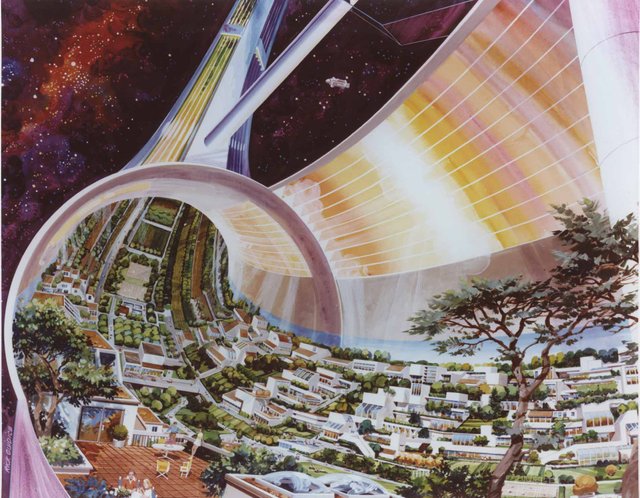
Torus shaped space colony conceptual art
The Lagrangian points will be very important in the future of space travel. They could serve as refueling and docking stations, spots for space colonies to sit, or just as plot points for science fiction.
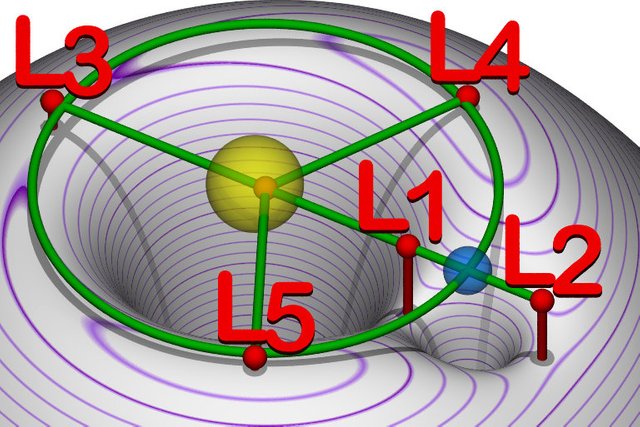
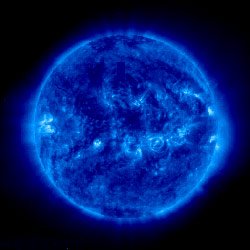
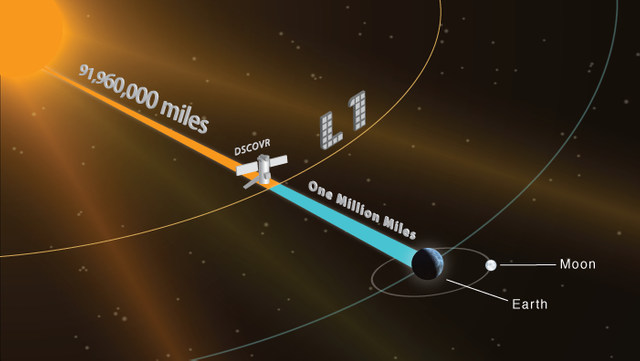
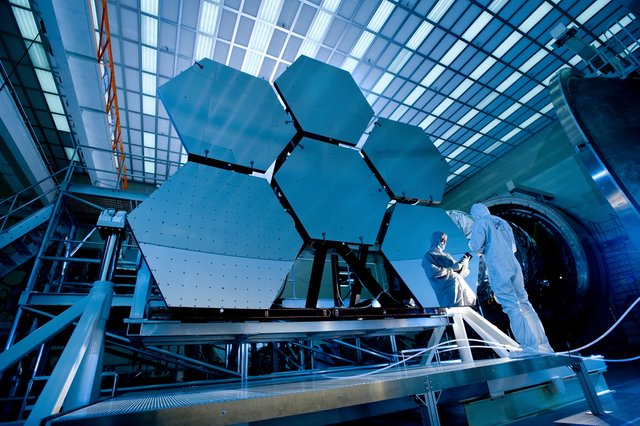
Heyo. Nice post that actually might become very relevant in the near future all with Space X being more developed and NASA's funding surprisingly not dropping much as predicted. As always upvoted and resteemed.
I was having a conversation with someone about what to do with captured resources if space mining becomes a reality.... Do you think it'd be more practical to try and bring space resources to cislunar space and process them immediately, or "park" them in L4/ L5 and try to build a processing base/ space station there?
I think it really depends on your goals. You might want to keep it at the points if you want to use them in space expeditions, or keep them there in "long term storage". If you don't need to use them right away and want to use them to load up a ship to launch somewhere in the solar system, you would likely launch from there anyway so one less stop. If you want to send it down to Earth, the closer the better.
Interesting.
I believe this concept was also mentioned in the Neil Stephenson's book "Seveneves"
Excellent post mate
Good information. Thanks for posting.
Had no idea such things existed :0
Upvoted!
Thank you very much for your post, very informative.
I am a biology guy, so I rarely come across physics or astronomy stuff, I just followed you for more science stuff!! Steemstem will be an interesting platform for me to learn more~
I see you like anime,
can you recognize this one?

Stalin-san?? Is that you, is that really you lol
nah but srsly tho communism is lit
so what was that lol?? communism and capitalism is both ends of a pendulum, eventually we swing towards one side~
that is a stupid theory.
Great blog, I'll follow you this is very interesting. I love space and science. Unfortunately I'm not as good as you on the subject
you could always drop by the #steemstem chat if you need help making science posts ;)
Your posts are really cool, can I please ask you for a huge favour to resteem my last introduceyourself post, I'm trying to get up to 50 followers, will do anything back to help you!!!
Your posts are really cool, can I please ask you for a huge favour to resteem my last introduceyourself post, I'm trying to get up to 50 followers, will do anything back to help you!!!